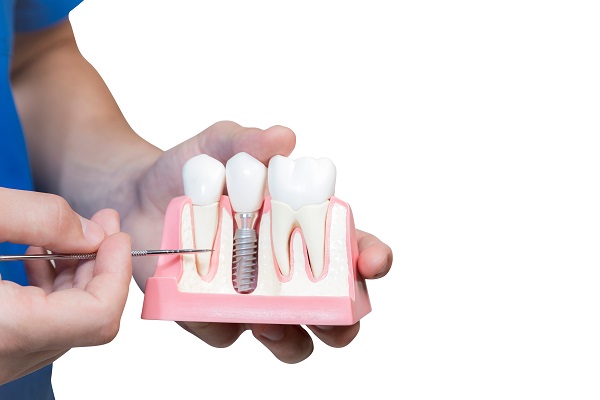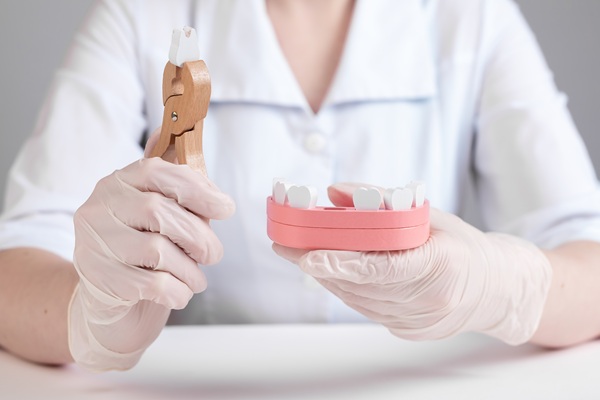A Periodontist Explains the Process and Visits for Getting Dental Implants

While many understand how beneficial dental implants are, some people with missing teeth may hesitate, unsure if it is the right option for them. It is helpful to better understand each step of the dental implants process from a periodontist when deciding on treatment.
The dental implants process
Each patient is unique and may have a slightly different experience with getting dental implants, but there is a common process most periodontists use for the implementation and aftercare. The following are four steps patients will likely experience while going through the dental implants process.
The initial consultation
The first step in the dental implants process is to schedule an initial visit with the periodontist, who will likely conduct an oral examination, order dental X-rays and ask the patient a series of questions about their dental and oral health history. The periodontist will also likely explain the entire dental implants process and inform the patient about possible alternative teeth replacement solutions to consider. At the end of the first visit or perhaps during another scheduled follow-up visit, the periodontist and the patient will decide whether to move forward with dental implants or another form of treatment.
The first placement procedure
If both the patient and the periodontist agree to treatment, a time is scheduled for the placement of the dental implant. Of course, the patient may require certain mouth preparations before treatment, such as bone grafting, gum grafting or treating periodontal disease. Whereas gum and bone grafting are procedures designed to restore the strength and appearance of the supporting structures of teeth, periodontal disease can cause unhealthy gums at risk of developing into a more serious concern. Once the mouth is healthy, the actual placement of the implant involves a minor surgical procedure to access the jawbone above or below the missing tooth and the placement of the implant.
The second placement procedure
Once the dental implant is in place, a process called osseointegration must take place, which involves the bone and the implant essentially fusing together and becoming one. After this process, which often takes several weeks if not months, an abutment and artificial tooth are placed upon the implant, completing the restoration process.
Follow-up visits and at-home care
After the first procedure in particular, there is likely to be some pain, swelling and soreness, and it is important to eat a healthy diet of soft foods that are easy to consume, along with practicing good oral hygiene and limiting physical activity. The periodontist may also recommend regular follow-up visits to ensure everything goes smoothly and the patient does not experience any issues with their new teeth.
Talk to a periodontist about treatment
If you are missing natural teeth and want to find out how a periodontist can help you replace the missing teeth long-term through dental implants, then get in touch with our team today and schedule a convenient time to come in for a first visit.
Request an appointment here: http://www.periodontistboca.com or call Thomas A. Copulos DDS, PA at (561) 763-1066 for an appointment in our Boca Raton office.
Check out what others are saying about our dental services on Yelp: Dental Implants in Boca Raton, FL.
Recent Posts
Appearance may be one of the first things people think about when it comes to tooth replacement. However, improved appearance is just one of the many benefits of replacing missing teeth. Tooth replacement can be key to improving not only how you feel about your smile but also boosting your oral health.Whether one chooses dentures,…
An oral surgeon might recommend the sinus lift procedure if your jawbone needs to be built up so it can hold dental implants. Also known as a sinus bone graft, the treatment is used to build bone tissues in the upper jaw. Oral surgeons or periodontists typically perform the procedure. Patients need to be fully…
Many patients with missing teeth find themselves looking at implants as a solution. Dental implants have become a popular tooth replacement option in recent years that offers numerous benefits for a patient's oral health. Different types of prostheses are used with implants for different severities of tooth loss.Implants are nowadays one of the most common…
More and more people are turning to implant supported dentures for full and partial tooth replacement. This option's continued rise in popularity is due to its impressive success rate and other key benefits. If you are exploring your tooth replacement options, there are unique advantages to choosing implant supported dentures.As the name suggests, implant supported…


